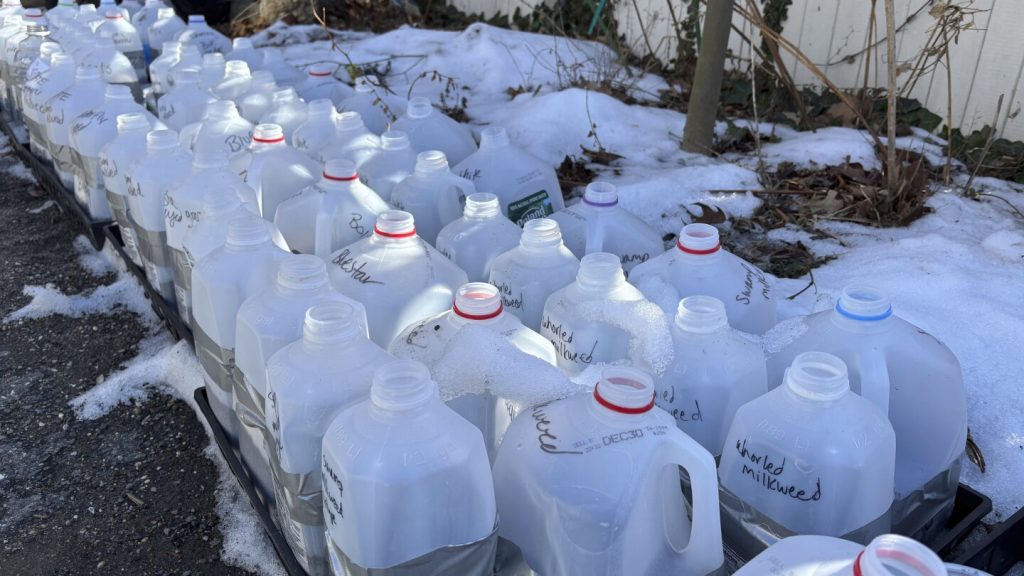Embrace the Outdoors with Winter Sowing
As the growing season approaches, many gardeners are gearing up to start seeds indoors, a process that often takes over kitchen counters and spare bedrooms. However, there is an alternative method that allows you to start seeds outdoors, despite the frozen ground, whipping winds, and snow cover. Winter sowing is a simple, low-maintenance technique that mimics nature’s way of planting seeds. Instead of relying on expensive equipment like heat mats and grow lights, you can use upcycled materials to create miniature greenhouses. This method not only saves space but also produces seedlings that are more resilient and vigorous than those started indoors.
Materials and Containers
Winter sowing requires minimal materials: suitable containers, potting mix, and seeds. Any food-safe container that can hold about 3 inches of potting mix will do. Popular choices include plastic milk and water jugs, takeout containers, and clamshell salad packages. If you opt for plastic jugs, start by poking drainage holes in the bottom. Then, cut the jugs horizontally, but not all the way through, so that a section remains connected to act as a hinge. For shallow, lidded containers, poke a few ventilation holes in the lids. In the case of jugs, you can leave the caps off to provide ventilation. Fill the containers with 3 inches of moistened seed-starting mix, ensuring it is well-draining and free of pathogens. Avoid using garden soil, as it is too dense and can harbor harmful microorganisms.
Selecting Suitable Plants
Not all plants are suitable for winter sowing. Heat-loving varieties like tomatoes and zinnias are best started indoors due to their tenderness in low temperatures. However, a wide range of cold-tolerant plants can thrive with this method. Herbs such as parsley, sage, and cilantro are excellent candidates. Cool-season vegetables like spinach, kale, broccoli, beets, lettuce, and cauliflower also do well. Hardy perennials, including milkweed, black-eyed Susans, and coneflowers, and tough annuals like pansies and snapdragons, are ideal for winter sowing. These plants are naturally adapted to colder conditions and benefit from the gradual warming of the soil and air temperatures that occur as winter transitions into spring.
Sowing the Seeds
The process of winter sowing is straightforward. Plant your seeds in the potting mix according to the depth recommended on their package labels. For example, some seeds may need to be surface-sown, while others require a light covering of soil. Once the seeds are planted, secure the lids on your containers or, if using jugs, tape the top and bottom sections back together with duct tape. Label each container with a permanent marker to keep track of what you’ve planted. Trust me, you won’t remember which is which come spring. Place the containers in a sunny spot that is somewhat protected from wind, such as against a wall. The natural cycles of snow and rain will provide the necessary moisture, and the freeze-thaw cycles will aid in seed germination.
Germination and Acclimation
Seeds will germinate when they are good and ready, responding to daylengths and temperatures rather than following a strict calendar. Once the seedlings reach about 2 inches in height and the threat of freezing temperatures has diminished, it’s time to begin the acclimation process. During the day, remove the container lids or detach the top halves of the jugs to allow the seedlings to adapt to outdoor conditions. At night, replace the lids to protect the seedlings from potential frost damage. This gradual exposure helps the young plants build resilience and prepare for the transition to the garden.
Transplanting and Success
When the danger of frost has passed in your horticultural zone, the seedlings will be ready for transplanting. Since they have already acclimated to outdoor conditions, they are more likely to thrive in the garden or pots. Winter sowing not only saves space and resources but also produces stronger, more resilient plants. By mimicking the natural process, you can enjoy a bountiful garden with minimal effort and cost. So, if you’re looking to simplify your seed starting routine and give your plants a natural head start, winter sowing is definitely worth a try.
Stay Connected
If you’re looking for more gardening advice and tips, Jessica Damiano, a weekly gardening columnist for the Associated Press and the publisher of the award-winning Weekly Dirt Newsletter, can be a valuable resource. Sign up for her newsletter to receive weekly insights on gardening. Additionally, you can find more AP gardening stories and inspiration at their dedicated hub, https://apnews.com/hub/gardening. Happy gardening!








